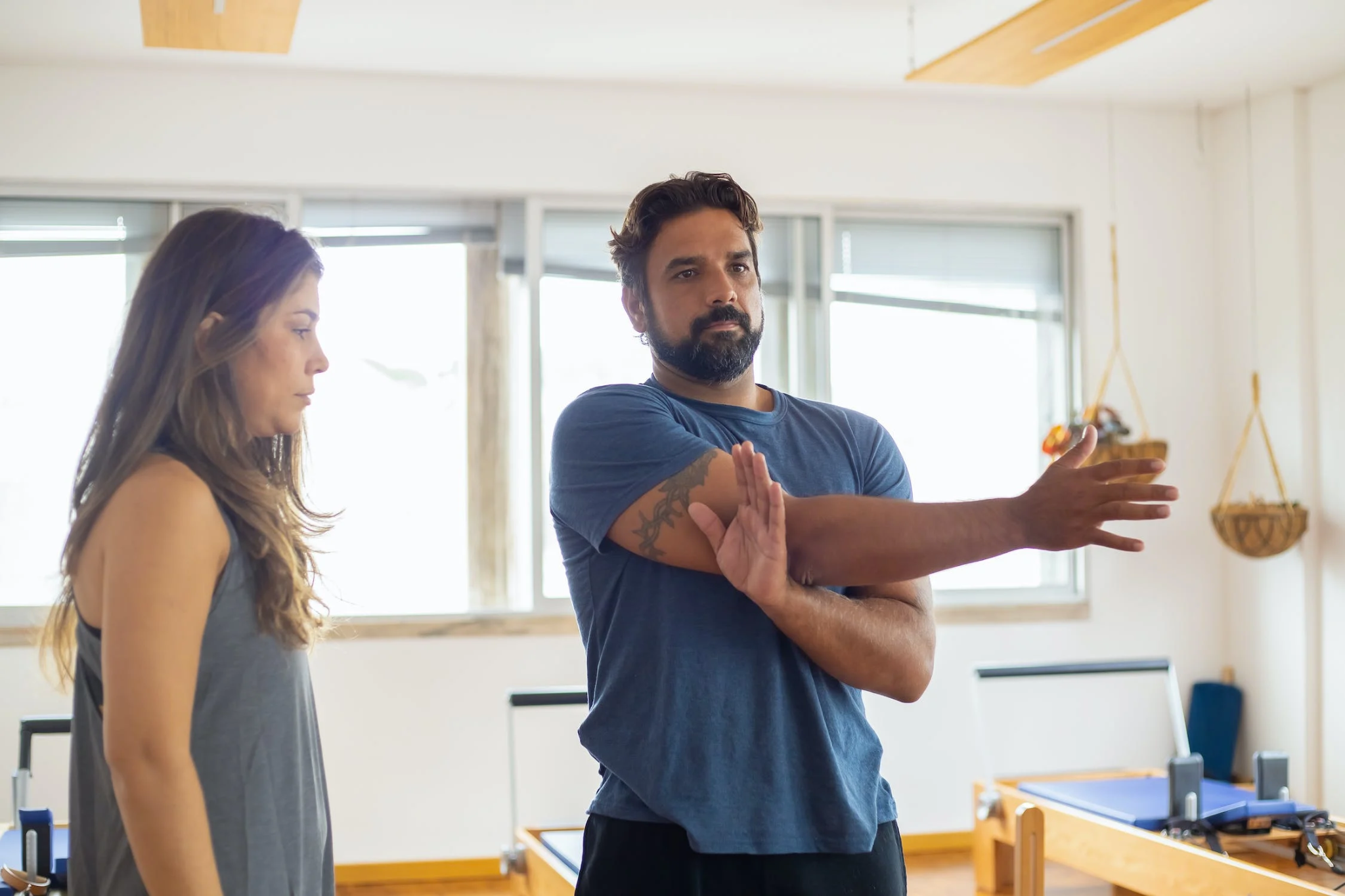
Manual physical therapy is not merely a treatment; it’s a gateway to recovery and rejuvenation. In a landscape filled with medical interventions and technological advancements, this hands-on approach continues to stand firm, proving that sometimes, the most profound healing comes from the human touch.
But what sets manual therapy apart from other medical practices? How can the strategic application of pressure, movement, and skillful manipulation lead to such remarkable improvements in physical health? Keep on reading to learn more.
Essential Components of Manual Therapy
Manual physical therapy encompasses a myriad of hands-on techniques aimed at relieving pain, enhancing mobility, and restoring optimal function. It’s not just a practice; it’s an individualized approach to healing.
Manipulations and Mobilizations
Manipulations are controlled, high-velocity movements applied to joints, often associated with a relieving “pop” sound. This technique requires precision, as specific thrusts increase the range of motion and correct misalignments, like a spinal adjustment.
Mobilizations, on the other hand, involve slower, more gentle stretching and movements of joints and soft tissues. They promote flexibility and reduce stiffness, addressing various joint and movement concerns with personalized care.
Soft Tissue Techniques
Soft tissue techniques focus on the muscles, ligaments, and fascia. Therapeutic massage is distinct from typical relaxation massage; it aims to ease muscle tension, promote blood flow, and aid recovery.
Myofascial release is a specialized technique targeting the fascia. It works on the connective tissue surrounding muscles. By stretching and releasing these tissues skillfully, therapists can alleviate chronic pain and restore movement.
Neuromuscular Techniques
The sphere of manual therapy extends to the nerve connections that control movement and sensation. Neurodynamics involves assessing and treating nerve mobility, ensuring that nerves can move freely within their pathways. This reduces pain and enhances function.
Trigger Point Therapy focuses on specific tight areas within a muscle, known as trigger points. Applying concentrated pressure to these areas relieves pain and restores normal muscle function.
Benefits of Manual Therapy
The popularity and effectiveness of manual physical therapy are not accidental. They are rooted in tangible benefits that extend across various physical conditions and needs, forming an essential part of comprehensive physical therapy. By focusing on patient-specific needs and employing hands-on techniques, manual therapy bridges the gap between traditional medical treatments and holistic well-being.
Pain Reduction
Manual physical therapy excels in alleviating pain, a common ailment that affects countless individuals. Through targeted manipulations and soft tissue techniques, therapists can address the underlying causes of pain, whether acute or chronic. By enhancing blood flow, reducing inflammation, and realigning mispositioned joints, manual therapy offers a pathway to pain-free living. This can also boost your mood and provide you with a happier disposition, providing a positive impact on your overall quality of life.
Increased Mobility
Restricted movement can hinder daily life, but manual therapy opens doors to restored freedom. Mobilizations gently stretch and move joints, breaking down barriers of stiffness and rigidity. Neurodynamics ensures that nerves glide smoothly, facilitating natural motion. Together, these methods contribute to a more fluid, agile body, allowing individuals to regain control over their movements.
Rehabilitation After Injuries
Manual therapy plays a pivotal role in the process of recovering from an injury, addressing the unique needs of each injury with a tailored approach. From the treatment of sports injuries to post-surgical rehabilitation, the combination of manipulations, soft tissue work, and neuromuscular techniques accelerates healing, restoring function, and strength.
Cost-Effective Care
Compared to some long-term medical treatments or invasive procedures, manual therapy often presents a cost-effective alternative. Whether it is for a loved one with a disability or someone recovering from surgery, manual therapy addresses underlying issues through non-invasive means. It can reduce the need for expensive medications or surgeries, aligning with both health and economic considerations.
Complementary to Other Treatments
Manual physical therapy can be effectively integrated with other medical treatments, acting as a complementary therapy. Whether paired with medication, exercise, or other therapeutic methods, it supports and enhances overall treatment effectiveness within the scope of comprehensive physical therapy. This integration allows for a multi-dimensional approach to healing, wherein manual therapy augments the benefits of conventional treatments.
Chronic Condition Management
Chronic conditions, such as arthritis or fibromyalgia, require ongoing care and attention. Manual therapy provides an invaluable tool in this constant battle. Techniques like myofascial release can ease the discomfort associated with chronic muscular tension, while targeted joint mobilizations offer relief from arthritic pain. It’s a comprehensive approach that considers the whole patient, offering sustained relief and improved quality of life.
Choosing the Right Approach: Tailoring Manual Therapy to Individual Needs
The success of manual physical therapy isn’t just hinged on the techniques employed but also on the careful consideration of individual needs, preferences, and unique medical conditions.
Understanding the Patient’s Condition
Before identifying specific manual therapy techniques, a thorough assessment of the patient’s condition is vital. This includes understanding the underlying medical issues, identifying the affected areas, and recognizing the unique needs and goals of the patient. Such individualized assessment ensures that manual therapy becomes more than a generalized approach; it transforms into a personalized healing path.
Selecting the Right Techniques
Manual therapy’s repertoire of techniques offers a rich toolbox for therapists. From manipulations and mobilizations to soft tissue work, the choice of techniques must align with the patient’s condition and the therapeutic objectives within the realm of comprehensive physical therapy. This delicate balancing act requires the therapist’s insight, experience, and ability to adapt.
Monitoring Progress and Adjustments
The road to recovery is rarely linear. It entails monitoring progress, gauging responses, and making necessary adjustments. Manual therapy thrives on this dynamic interaction between therapist and patient, ensuring that the approach evolves with the healing process.
Patient Education and Empowerment
Empowering patients is an often-overlooked aspect of manual therapy but one that bears significant weight. Educating patients about their condition, the techniques being used, and the expected outcomes fosters a collaborative atmosphere. It aligns manual therapy’s goals with patient empowerment, making them active participants in their healing journey within comprehensive physical therapy.
Conclusion

Through its array of hands-on techniques, individualized approach, and far-reaching benefits, manual physical therapy represents more than just a treatment option; it is a finely-tuned orchestration of healing. Its adaptability across various conditions, from orthopedic care to chronic pain management, underscores its significance in modern medicine.









![Daily Bite [Make]: Philly Cheesesteak Stuffed Bell Peppers](https://dashofwellness.com/wp-content/uploads/2013/01/Philly-Cheesesteak-Stuffed-Pepper-Daily-Bite-1-100x70.png)
